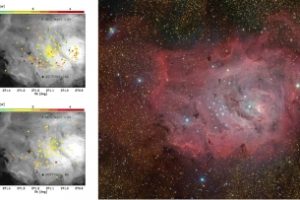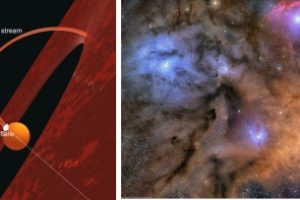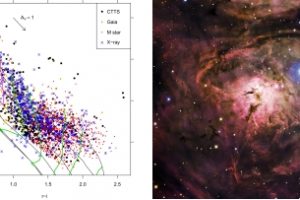A long star formation process 15 million years long in the Lagoon Nebula

Stars form from the gravitational contraction of large gas clouds. This process may occur in two different modes: It may be fast, with a characteristic timescale dictated by the free fall of gas onto the forming stars, or it may be slow, sustained by turbulence and magnetic field. In the former case stars form over a short period, while in
» Read more








